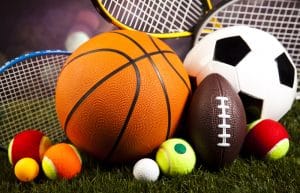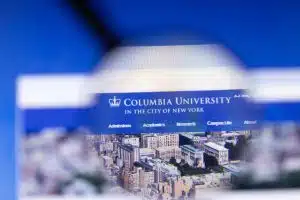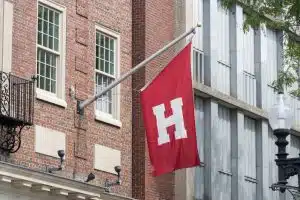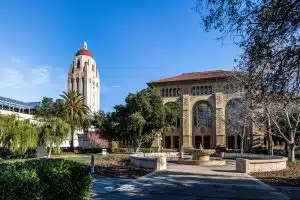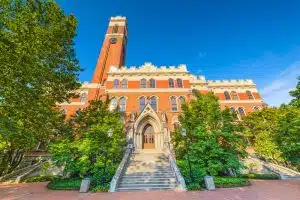Exploring Varsity Sports at Dartmouth
From the smallest intramural squad to the largest varsity team, sports hold an essential place at Dartmouth. The various activities offer an enriching experience to every member of the Dartmouth community – students, athletes, coaches, fans, and alumni. In this article, we take an in-depth look at the importance of sports in the Dartmouth community, the overview of the varsity sports teams, the athletic facilities, the role of coaches, and how student-athletes balance academics and sports.
Understanding Dartmouth’s Athletic Culture
Dartmouth believes that athletics and physical well-being are crucial tenets of a well-rounded college education. As such, students are encouraged and often required, to engage in physical activities. At Dartmouth, sporting activities are also regarded as unifying events that bring together people from different social, academic, and cultural backgrounds.
Regarding athletics, Dartmouth College takes great pride in its rich history and strong athletic culture. The college boasts a wide range of sports programs, offering students the opportunity to participate in various athletic endeavors. From traditional sports like football, basketball, and soccer to niche sports like rowing, skiing, and fencing, Dartmouth provides a diverse array of options for students to explore and excel in.
The Importance of Sports in Dartmouth’s Community
At Dartmouth, sports are avenues for community building. Special events such as home games consistently attract large, passionate crowds that show their support and school spirit. The cheers and chants reverberate through the stands, creating an electric atmosphere that ignites a sense of unity and camaraderie among the attendees.
These gatherings also offer a chance for students, faculty members, alumni, and Hanover residents to interact and foster stronger relationships. Whether it’s tailgating before a football game, cheering on the basketball team from the student section, or celebrating a victory with fellow fans, these shared experiences create lasting memories and connections that extend far beyond the field or court.
Moreover, the success of Dartmouth’s teams in various intercollegiate competitions not only enhances school pride but also brings recognition and prestige to the college, improving its reputation on the national stage. When Dartmouth athletes excel in their respective sports, it not only reflects their dedication and talent but also showcases the college’s commitment to fostering excellence in all areas of student life.
The Role of Athletics in Student Life
For Dartmouth students, participating in sports can greatly enrich their college experience. Athletes are pushed to develop skills such as discipline, teamwork, and leadership, which can be crucial for their future endeavors.
The rigorous training, demanding practice schedules, and intense competition shape individuals into well-rounded individuals who are not only physically fit but also possess valuable life skills.
Additionally, the physical demands of sports serve as an excellent outlet for stress, which is beneficial for mental health. Given the rigorous academic demands of Dartmouth, having an avenue to pursue physical activities provides a much-needed balance for the students.
Engaging in sports allows them to channel their energy and focus into something constructive, relieving the pressures of academic life and promoting overall well-being.
Furthermore, Dartmouth’s commitment to athletics extends beyond the varsity level. The college offers a wide range of intramural and club sports, allowing students of all skill levels to participate and enjoy the benefits of physical activity. Whether it’s joining a recreational soccer league, competing in a friendly game of ultimate frisbee, or trying out a new sport through a club, Dartmouth encourages students to find their passion and stay active throughout their college journey.
In conclusion, Dartmouth College’s athletic culture is deeply ingrained in the fabric of the institution. From fostering community spirit and pride to providing opportunities for personal growth and well-being, sports play a vital role in the lives of Dartmouth students. Whether as a spectator or a participant, the athletic experiences at Dartmouth are sure to leave a lasting impact on all who engage with them.
A Look at Dartmouth’s Varsity Sports Teams
The Dartmouth Big Green, which is the nickname of the sports teams at Dartmouth, competes at the NCAA Division I level in 33 varsity sports. The college’s athletic program is one of the oldest and most successful in the country.
Dartmouth College, located in Hanover, New Hampshire, has a long-standing tradition of excellence in athletics. With a wide range of varsity sports teams, both men and women have the opportunity to compete at a high level and represent the Big Green.
Overview of Men’s Varsity Teams
Dartmouth has 16 men’s varsity teams, each with a rich history and a strong presence in their respective sports. These teams include football, basketball, cross country, skiing, swimming & diving, tennis, track & field, baseball, golf, ice hockey, lacrosse, heavyweight rowing, lightweight rowing, soccer, and squash.
The Dartmouth football team, known for its fierce competitiveness and storied history, has claimed an impressive 18 Ivy League Championships. The team’s dedication and skill have made them a formidable force in the league, earning the respect of their opponents and the admiration of their fans.
Other men’s teams, such as basketball and ice hockey, have also achieved notable success. The basketball team has had numerous appearances in the NCAA tournament, showcasing the talent and determination of its players. Likewise, the ice hockey team has consistently competed at a high level, thrilling fans with their fast-paced and skillful play.
Overview of Women’s Varsity Teams
Similarly, women’s sports play an equally critical role at Dartmouth. The college has 19 women’s varsity teams, each with its own legacy of success and dedication to excellence. These teams include basketball, cross country, equestrian, field hockey, golf, ice hockey, lacrosse, rowing, skiing, soccer, softball, squash, swimming & diving, tennis, track & field, sailing, rugby, and volleyball.
The women’s ice hockey team, for example, has consistently been a force to be reckoned with in the NCAA. Their skill, teamwork, and determination have led them to numerous conference championships and national tournament appearances. Dartmouth’s women’s lacrosse team has also made its mark on the collegiate sports scene, consistently ranking among the top teams in the nation.
Many of Dartmouth’s women’s varsity teams have produced exceptional athletes who have gone on to achieve success beyond the collegiate level. These athletes have represented Dartmouth and the United States in various international competitions, including the Olympics. Their dedication and talent have brought recognition to Dartmouth’s athletic program and served as an inspiration to future generations of athletes.
Overall, Dartmouth’s varsity sports teams are a testament to the college’s commitment to excellence, both on and off the field. Through their hard work, passion, and competitive spirit, these teams have established a legacy of success that continues to inspire and unite the Dartmouth community.
The Athletic Facilities at Dartmouth
Dartmouth offers state-of-the-art athletic facilities to its students, ranging from indoor arenas to outdoor fields, ensuring the best training and competition experience.
When it comes to indoor athletic facilities, Dartmouth has spared no expense in providing its athletes with top-notch spaces. One of the main highlights is the Berry Sports Center, a state-of-the-art facility that serves as the home for the basketball and volleyball programs. Equipped with modern amenities and a spacious court, the Berry Sports Center provides the perfect environment for athletes to hone their skills and compete at the highest level.
Swimming and diving enthusiasts will find their haven in the Karl Michael Pool, a hub of aquatic activity on campus. With its Olympic-sized pool and diving platforms, the Karl Michael Pool is where Dartmouth’s swimming and diving teams train tirelessly, pushing themselves to achieve new heights of excellence.
Another premiere location within Dartmouth’s indoor athletic facilities is the Boss Tennis Center. This impressive facility boasts six indoor and six outdoor tennis courts, making it a haven for both the varsity tennis teams and the wider community. With its well-maintained courts and state-of-the-art equipment, the Boss Tennis Center provides the perfect setting for players of all levels to enjoy the sport.
But the indoor athletic facilities at Dartmouth don’t stop there. The Leverone Field House, a multi-purpose indoor facility, offers a 200-meter track that serves as the ideal training ground for the track and field teams. Athletes can be seen sprinting, jumping, and throwing in this versatile space, pushing their limits and striving for greatness.
For ice hockey enthusiasts, the Thompson Arena is the place to be. Home to both the men’s and women’s ice hockey teams, this arena not only hosts thrilling games but also serves as a venue for a variety of community events. With its ice glistening under the bright lights, the Thompson Arena is a symbol of Dartmouth’s commitment to fostering a vibrant sports culture.
When it comes to outdoor athletic facilities, Dartmouth continues to impress. The Memorial Field stands tall as the home of Dartmouth football, with a seating capacity of 11,000. On game days, the atmosphere is electric as fans cheer on the team, creating an unforgettable experience for both players and spectators alike.
The Scully-Fahey Field serves as the home turf for both the men’s and women’s lacrosse teams. With its well-manicured grass and ample seating, this field provides the perfect setting for lacrosse enthusiasts to witness thrilling matches and support their favorite players.
Baseball and softball lovers have their own dedicated spaces at Dartmouth. The baseball team calls Red Rolfe Field home, a meticulously maintained field that provides the perfect backdrop for America’s favorite pastime. Meanwhile, the softball team enjoys Dartmouth Softball Park, a venue where they can showcase their skills and compete against formidable opponents.
For those who enjoy the precision and strategy of golf, Dartmouth’s golf course offers a challenging yet picturesque setting. With its lush greens and stunning views, this course attracts both seasoned golfers and beginners looking to improve their swing.
Rugby enthusiasts can be found on the Rugby Field, where the Dartmouth rugby teams practice and compete. The field echoes with the sounds of players colliding and fans cheering, creating an atmosphere of camaraderie and fierce competition.
Lastly, the Friends of Dartmouth Rowing Boathouse is a hub of activity for the rowing teams. Situated by the river, this boathouse is where rowers gather to train, prepare their boats, and embark on exhilarating races. The dedication and teamwork displayed by the rowers are truly awe-inspiring.
With its impressive array of indoor and outdoor athletic facilities, Dartmouth ensures that its students have access to the best resources to pursue their athletic passions. Whether it’s shooting hoops in the Berry Sports Center, diving into the Karl Michael Pool, or scoring goals on the Memorial Field, Dartmouth’s athletic facilities provide the perfect stage for athletes to excel and create lasting memories.
The Role of Coaches in Dartmouth’s Varsity Sports
At Dartmouth, the role of a coach goes beyond training athletes and winning games. Coaches are an integral part of the athletes’ lives, shaping their character and aiding their overall development.
The Recruitment Process for Coaches
Dartmouth follows a thorough and comprehensive coach recruitment process. Besides the necessary coaching qualifications and a proven record, the college seeks individuals who understand the rigorous academic challenges their athletes face and can provide support accordingly.
The Impact of Coaching on Athlete Performance
Coaching has a significant impact on athletes’ performance. Dartmouth’s coaches use a holistic approach to training. They focus not only on physical conditioning and technical skill development but also on mental and psychological readiness, fostering a sense of teamwork and competitiveness among the athletes.
The Academic Balance for Varsity Athletes
While Dartmouth’s student-athletes excel on the field, they are also expected to uphold the same high standards in the classroom. Balancing these dual demands requires great discipline and effective time management.
Time Management for Student Athletes
As varsity athletes have busy and often demanding schedules, they are encouraged to develop strong time management skills. These skills help them balance academic workload with training schedules, ensuring they perform optimally in both areas.
Support Services for Athlete’s Academic Success
To bolster the academic success of its athletes, Dartmouth offers a range of support services. These include academic advisors, free tutoring opportunities, study halls, mental health support, and career coaching. All these services aim to ensure that the college’s student-athletes are equipped to excel in both their sport and their studies.
It’s clear that Dartmouth solidly stands in the belief that sports foster unity, discipline, teamwork, and leadership skills. The school’s culture of promoting athletic prowess alongside academic success creates well-rounded individuals capable of excelling in all walks of life.
Having all the necessary information is important before choosing any course of action. AdmissionSight is always here to assist you with any questions or concerns. We have more than ten years of expertise assisting students in successfully navigating the challenging admissions process.
Consult with AdmissionSight and find out what we can do to help you get into the school of your choice by ensuring that you are sufficiently aware and well-prepared for the application process.




